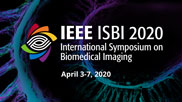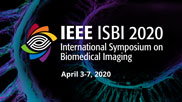Collection:

Deep convolutional neural networks have been applied to medical image segmentation tasks successfully in recent years by taking advantage of a large amount of training data with golden standard annotations. However, it is difficult and expensive to obtain good-quality annotations in practice. This work aims to propose a novel semi-supervised learning framework to improve the ventricle segmentation from 2D cine MR images. Our method is efficient and effective by computing soft labels dynamically for the unlabeled data. Specifically, we obtain the soft labels, rather than hard labels, from a teacher model in every learning iteration. The uncertainty of the target label of unlabeled data is intrinsically encoded in the soft label. The soft label can be improved towards the ideal target in training. We use a separate loss to regularize the unlabeled data to produce similar probability distribution as the soft labels in each iteration. Experiments show that our method outperforms a state-of-the-art semi-supervised method.
- IEEE MemberUS $11.00
- Society MemberUS $0.00
- IEEE Student MemberUS $11.00
- Non-IEEE MemberUS $15.00
Videos in this product
A Context Based Deep Learning Approach for Unbalanced Medical Image Segmentation
Automated medical image segmentation is an important step in many medical procedures. Recently, deep learning networks have been widely used for various medical image segmentation tasks, with U-Net and generative adversarial nets (GANs) being some of the commonly used ones. Foreground-background class imbalance is a common occurrence in medical images, and U-Net has difficulty in handling class imbalance because of its cross entropy (CE) objective function. Similarly, GAN also suffers from class imbalance because the discriminator looks at the entire image to classify it as real or fake. Since the discriminator is essentially a deep learning classifier, it is incapable of correctly identifying minor changes in small structures. To address these issues, we propose a novel context based CE loss function for U-Net, and a novel architecture Seg-GLGAN. The context based CE is a linear combination of CE obtained over the entire image and its region of interest (ROI). In Seg-GLGAN, we introduce a novel context discriminator to which the entire image and its ROI are fed as input, thus enforcing local context. We conduct extensive experiments using two challenging unbalanced datasets: PROMISE12 and ACDC. We observe that segmentation results obtained from our methods give better segmentation metrics as compared to various baseline methods.
Soft-Label Guided Semi-Supervised Learning for Bi-Ventricle Segmentation in Cardiac Cine MRI
Deep convolutional neural networks have been applied to medical image segmentation tasks successfully in recent years by taking advantage of a large amount of training data with golden standard annotations. However, it is difficult and expensive to obtain good-quality annotations in practice. This work aims to propose a novel semi-supervised learning framework to improve the ventricle segmentation from 2D cine MR images. Our method is efficient and effective by computing soft labels dynamically for the unlabeled data. Specifically, we obtain the soft labels, rather than hard labels, from a teacher model in every learning iteration. The uncertainty of the target label of unlabeled data is intrinsically encoded in the soft label. The soft label can be improved towards the ideal target in training. We use a separate loss to regularize the unlabeled data to produce similar probability distribution as the soft labels in each iteration. Experiments show that our method outperforms a state-of-the-art semi-supervised method.
 Cart
Cart Create Account
Create Account Sign In
Sign In

